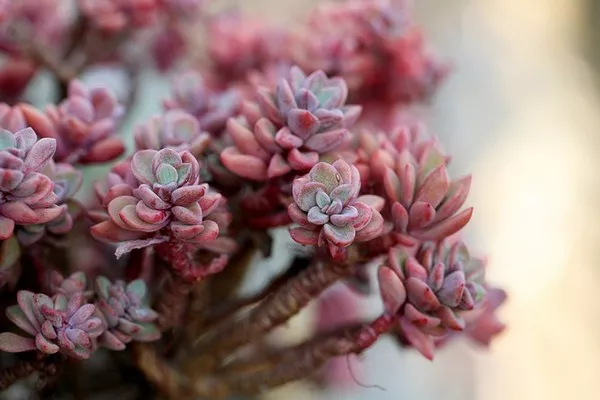Succulents have gained immense popularity in recent years due to their unique shapes, colors, and low maintenance requirements. One of the most fascinating aspects of these plants is their ability to propagate from leaves, making them ideal for both novice and experienced gardeners alike. In this guide, we will explore the step-by-step process of planting succulent leaves with roots to ensure successful propagation and healthy growth.
Understanding Succulent Propagation
Before delving into the planting process, it’s important to understand how succulents propagate. Unlike many other plants that rely primarily on seeds for reproduction, succulents have the remarkable ability to grow new plants from individual leaves. This process, known as vegetative propagation, allows succulents to produce clones of themselves.
When a healthy leaf is removed from a succulent plant, it has the potential to develop roots and eventually form a new plant. This process typically occurs in two stages: rooting and sprouting. Rooting involves the development of a root system from the base of the leaf, while sprouting refers to the emergence of new growth, typically in the form of a rosette or stem, from the top of the leaf.
Selecting Healthy Leaves
The first step in planting succulent leaves with roots is to select healthy leaves from a mature, established plant. Look for leaves that are plump, firm, and free from any signs of damage or disease. Avoid selecting leaves that are wilted, shriveled, or discolored, as they may not have the necessary energy reserves to propagate successfully.
When removing leaves from the parent plant, use clean, sharp scissors or pruning shears to make a clean cut, ensuring minimal damage to the plant. It’s essential to leave a small portion of the leaf attached to the stem to provide support for the cutting during the rooting process.
Preparing the Cuttings
Once you have selected your leaves, allow them to callus over before planting. This step is crucial as it helps to prevent rot and infection while the cutting develops roots. To callus the leaves, place them in a dry, shaded area for approximately 1-3 days, allowing the cut ends to dry and form a protective layer.
After the leaves have callused, they are ready to be planted. Prepare a well-draining potting mix specifically formulated for succulents or cacti. A mix composed of equal parts of potting soil, perlite, and coarse sand works well for most succulent species. Fill a shallow tray or pot with the potting mix, ensuring that it is evenly distributed and lightly compacted.
Planting the Leaves
With the potting mix prepared, it’s time to plant the succulent leaves. Gently insert the cut end of each leaf into the potting mix, burying it approximately ½ to 1 inch deep. Ensure that the leaves are planted upright and stable, with the callused end securely anchored in the soil.
Spacing the leaves apart will prevent overcrowding and allow adequate airflow around each cutting. Avoid burying the entire leaf in the soil, as this can increase the risk of rot and inhibit root development. Instead, position the leaf so that only the callused end is in contact with the soil.
Watering and Care
After planting, lightly water the potting mix to settle it around the cuttings, being careful not to saturate the soil. Succulent leaves with roots do not require frequent watering, as they are capable of absorbing moisture and nutrients from the air. Overwatering can lead to root rot and other issues, so it’s essential to allow the soil to dry out between waterings.
Place the tray or pot in a bright, indirect light location, such as a windowsill or greenhouse. Avoid exposing the cuttings to direct sunlight, as this can cause sunburn and damage delicate roots. Maintain a consistent temperature of 65-75°F (18-24°C) to promote optimal growth and development.
Rooting and Sprouting
With proper care and attention, succulent leaves will begin to develop roots within a few weeks of planting. During this time, it’s important to monitor the soil moisture levels and adjust watering frequency as needed. Once roots have formed, new growth will emerge from the top of the leaf, signaling that the cutting has successfully rooted.
Continue to provide adequate light, warmth, and ventilation to encourage healthy growth and development. As the new plantlet matures, you may notice the formation of a miniature rosette or stem at the base of the leaf. Once the new plant has established a robust root system and several sets of leaves, it can be transplanted into its own individual pot for continued growth.
Troubleshooting Common Issues
While propagating succulent leaves with roots is relatively straightforward, there are some common issues that may arise during the process. Here are a few troubleshooting tips to help address these concerns:
1. Rotting: If the leaves begin to rot or develop mold, remove them immediately and adjust your watering practices to prevent excess moisture buildup.
2. Drying Out: If the leaves appear shriveled or desiccated, increase the frequency of watering to ensure adequate hydration.
3. Lack of Rooting: If the leaves fail to develop roots after several weeks, check the environmental conditions and adjust as needed. Providing bottom heat or using a rooting hormone can help stimulate root growth.
4. Leggy Growth: If the new growth appears tall and stretched out, it may be an indication of inadequate light. Move the cuttings to a brighter location to encourage more compact, robust growth.
Conclusion
By following these tips and guidelines, you can successfully plant succulent leaves with roots and enjoy the rewarding experience of propagating your own unique collection of these captivating plants. With patience and care, you’ll soon be rewarded with a lush display of new succulent growth, adding beauty and character to your indoor or outdoor space.


